Experiencing Hair Fallout? This Is Everything You Need to Know
We all know the feeling: Upon stepping out of the shower, you turn around and are faced with a rather scary cobweb of human hair. Your hair, to be precise. It is these moments that make you wonder just how much hair fallout should be considered normal. Some days, the amount of hair in the bottom of the shower is enough to have you Googling scalp issues, while other times, you barely need to clear the plughole at all.
The truth is that everyone's hair naturally falls out to some extent. However, an increase in the amount of hair that ends up in your hairbrush, on your pillow or on the shower floor can prove quite worrying. In fact, hair fallout is considered one of the leading hair concerns among women. So what’s the deal? Why do some people suffer from increased hair fallout and thin hair while others boast thick, healthy hair all year round? And perhaps most importantly, what can be done to help promote hair growth? From common causes to the best products out there, keep scrolling for everything you need to know about increased hair fallout and hair loss.
What Are the Main Causes?

Just like our skin, our hair can be a good representation of our overall health. If you’re feeling rundown, it’s likely not a coincidence that your hair is looking a little drab. Kérastase Scientific Advisor Atoshi George explains, "Factors like stress, lack of sleep, diet, health conditions and medication can all affect the appearance of your hair by sending the hair prematurely out of the growth phase into the resting phase, as well as causing the natural structure of the hair to weaken during its formation period.” And essentially, it all comes down to hormones. "Growth and regeneration in the body are controlled by a complex balance of hormones and some hormones have a more direct effect on the hair. These can be caused by extrinsic factors like stress and diet or intrinsic factors like ageing and genetics,” adds George.
Beyond lifestyle factors, however, comes how we actually look after the hair we already have. It turns out that the stresses that we put our hair under can have a dramatic impact on exactly how long it sticks around for. "Activities like bleaching, colouring and heat styling your hair have a marked effect on its internal and external strength. Ensuring the lengths of your hair are properly cared for means it lasts longer without breaking,” he says. And it’s not just colour and heat damage that has the potential to cause hair fall. George warns, "Simple combing and brushing can also leave hair weak and damaged from force.”
When Should It Be Addressed?

As previously mentioned, it’s totally normal for hair to shed. All hair has a life span, and when it reaches the end of it, it simply falls out, making way for new hair to start growing. However, if you’re experiencing an increase in hair fallout, it’s time to take a step back and consider what the issues might be.
"If hair falls more than the usual daily amount (50-100 hairs), if it becomes focused in a pattern, or you’re experiencing significant breakage of the shaft, then that is something to be addressed,” warns George. If you have concerns about increased hair fallout, book in to see either your hairstylist or GP, depending on the likely causes.
What Can Be Done to Help?

While having to deal with increased hair fallout and loss can be scary and daunting, there are some things that you can do to help. "The first thing to avoid is stress,” says George. "It can be worrying to see strands of hair on your brush or pillow, but take a moment to understand whether it is caused by breakage or if it is more visible at certain times of the year or month. Keep a close eye and do not be afraid to visit your doctor to see if there is an underlying cause.”
However, there are some at-home products that can help to prevent fallout and promote growth. George says, "Ensure you find products that will help repair the micro scars that the surface of your hair has suffered over its years. Restoring the hair’s strength and the protective outer layer will help stop hair breakage and maintain the density of your hair from root to tip.”
Not sure where to start? Keep scrolling for the hair products that actually work to strengthen hair and promote growth.

Perfect for weakened hair, this intensely nourishing mask makes hair feel thicker, stronger and softer after just five minutes of work. Plus, it's formulated with ginger root to stimulate growth.
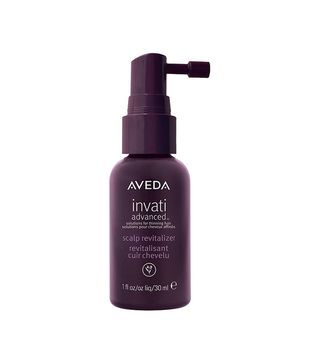
When sprayed directly onto the scalp once a day and massaged in, this clever formula works to strengthen hair by supporting its natural keratin. It also invigorates and stimulates the scalp to encourage growth.
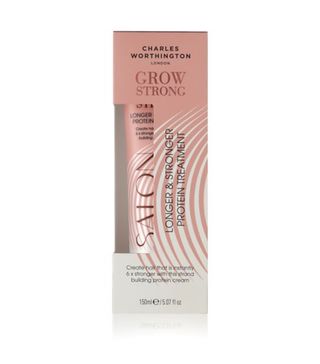
If breakage is your issue, this protein cream could be just what you need. Apply through damp ends after washing to help strengthen weak strands. Plus, it also doubles up as a heat protector and leaves lengths seriously shiny.
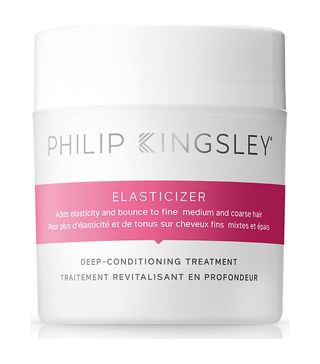
No matter what your hair issue may be, it's advisable to always give this treatment a go before you try anything else. This cult product works to increase the elasticity of the hair to help avoid breakage. Apply it all over hair before you shampoo (yes, you read that right), leave it on for 15 minutes and expect your hair to be the healthiest you've ever seen it. Honestly, if you haven't tried it, now is the time.
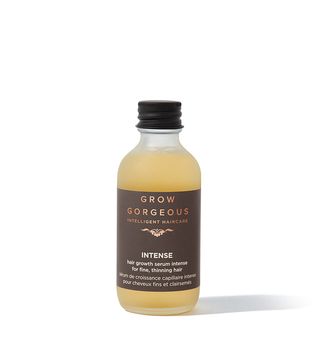
This serum works as a real all-rounder for thinning hair. Massage into the scalp every day for fuller, thicker and healthier hair. With caffeine to stimulate blood flow and red clover to encourage growth, this is considered one of the most impressive growth serums out there.
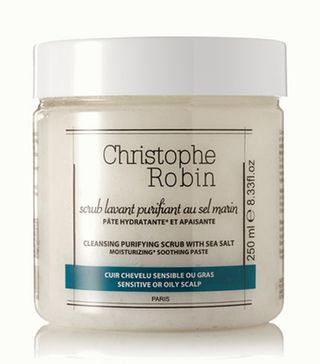
Quite possibly one of the most iconic hair products of all time, this scalp scrub works to provide the healthiest environment for your hair to grow. Use in place of your shampoo and really massage into the scalp and rinse it through lengths for a detoxed, purified scalp and hair that feels brand new.

An unhealthy scalp does not make for healthy strands. If you like your haircare routine to come with added luxury, this shampoo is for you. Not only is it divine to use, but it also comes with a healthy dose of salicylic acid to rid your scalp of unhealthy dead skin without causing further dryness. It's the perfect way to take things back to basics.

Formulated with niacinamide to help build up hair strength and also improve the condition of an irritated scalp, this treatment works to restore your hair from the root down.
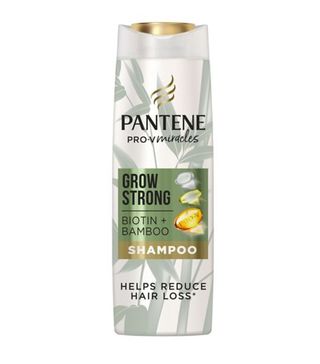
Who says healthy hair has to come at a price? This super-affordable shampoo is formulated with biotin to promote the growth of strong hair, specifically for those that are experiencing hair fallout as a result of breakage.
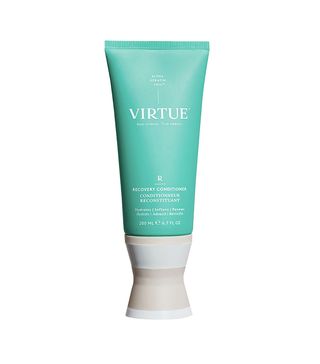
If your hair is snapping and breaking, a conditioning treatment like this one from Virtue could be just what you need. Containing pea protein to protect from heat and Virtue's signature keratin complex to help strengthen and restore, you can expect seriously strong strands after just one use.
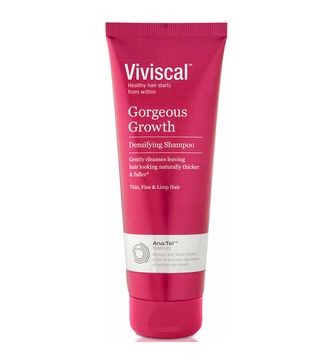
Besides the fact this shampoo is incredibly gentle on fragile lengths, it also contains a clever complex that contains biotin (deficiency of biotin is common in those with increased hair fallout) and zinc to keep hair follicles healthy and active.
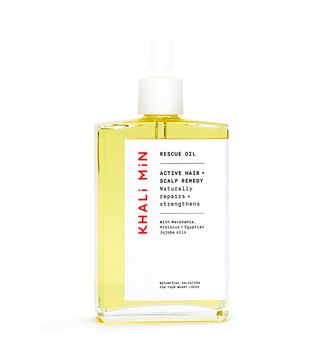
Hair health starts at the scalp, which is why this oil is so wonderful. Simply apply to dry hair and the scalp, leave it on overnight and wash it out in the morning to reveal conditioned, shiny hair and a soothed, healthy scalp.
Up next, the secret celebrity hair tips and tricks that everyone should know.
Shannon Lawlor is a renowned beauty journalist and has contributed to Who What Wear’s beauty content since 2020. As a leading beauty editor, expert and brand consultant, she has over eight years of experience working for some of the industry’s most esteemed titles, including Who What Wear (of course), Glamour UK, Stylist, Refinery29 and Fabulous.
Having also worked behind the scenes with some of the industry’s biggest brands and retailers, Shannon has a unique insight into what people really want from their beauty routines. Understanding that beauty lovers seek honest, open and responsible advice, she has it made her mission to demystify the intimidating world of beauty, taking a no-frills approach to the most relatable topics.
While Shannon is the first to admit she doesn’t hold the answer to every beauty question out there, she is dedicated to sharing her expert insights in a bid to help. As a self-proclaimed lazy girl, Shannon has an affinity for easy-to-use, foolproof beauty products and has made it her mission to scope out the best of the best.
When she’s not working, Shannon is likely soaking in the bath or giving no-holds-barred beauty reviews on Instagram from her bathroom floor.
-
 It's Confirmed: This Is the Key to Fresh-From-the-Salon Hair
It's Confirmed: This Is the Key to Fresh-From-the-Salon HairSponsor Content Created With CHI Haircare
By Aniyah Morinia
-
 Editors and Stylists Agree: Your Hair Routine Is Missing These 6 Products
Editors and Stylists Agree: Your Hair Routine Is Missing These 6 ProductsSponsor Content Created With Kerastase
By Aniyah Morinia
-
 You *Can* Pivot to a Totally New Career—Briogeo Founder Nancy Twine Is Proof
You *Can* Pivot to a Totally New Career—Briogeo Founder Nancy Twine Is ProofHow she got her start might surprise you.
By Shawna Hudson
-
 I'm Just a Girl: This Is How 4 Editors Solve Relatable Beauty Struggles
I'm Just a Girl: This Is How 4 Editors Solve Relatable Beauty StrugglesEditors know best.
By Maya Thomas
-
 Derms Recommend This Ingredient to Fix Dry, Flaky Scalps (and It Only Costs $13)
Derms Recommend This Ingredient to Fix Dry, Flaky Scalps (and It Only Costs $13)Say goodbye to your scalp issues.
By Kaitlyn McLintock
-
 This Key Hair Staple Is a Must for Keeping Your Curls Juicy AF
This Key Hair Staple Is a Must for Keeping Your Curls Juicy AFIt's time to take the plunge.
By Maya Thomas
-
 Argan Oil Can Bring Dull Hair Back to Life (Plus Prevent Damage and Split Ends)
Argan Oil Can Bring Dull Hair Back to Life (Plus Prevent Damage and Split Ends)Time to make this ingredient a haircare staple.
By Katie Berohn
-
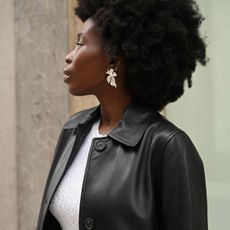 Found: The Most Effective Supplements for Hair Growth, According to Rave Reviews
Found: The Most Effective Supplements for Hair Growth, According to Rave ReviewsHealthy hair ahead.
By Maya Thomas

